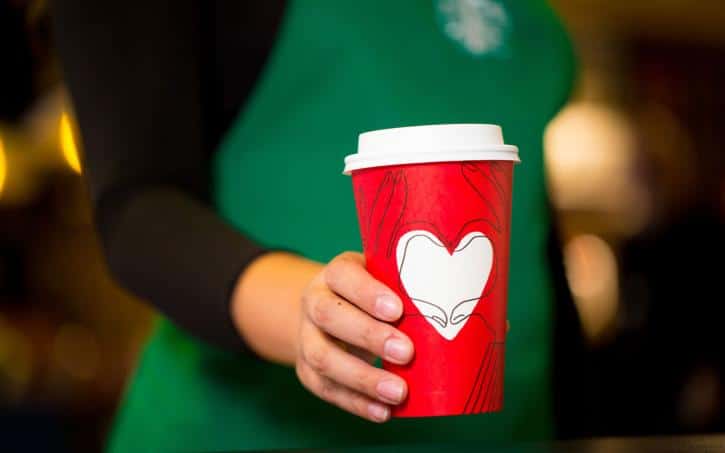
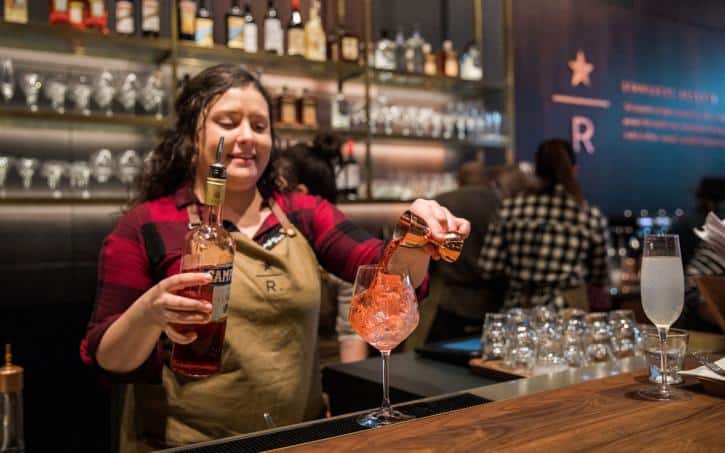
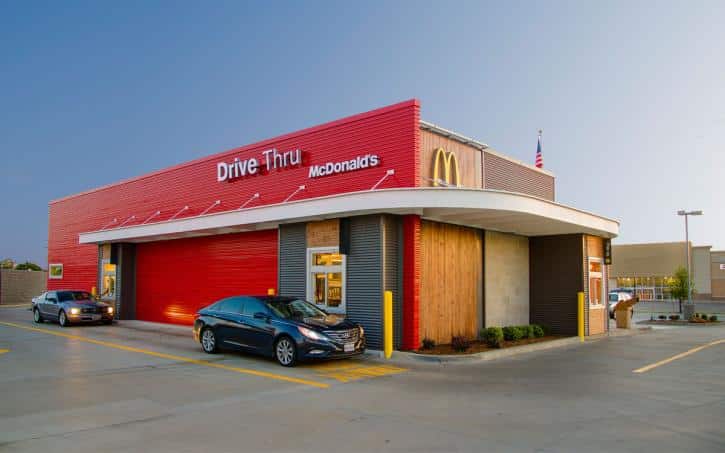
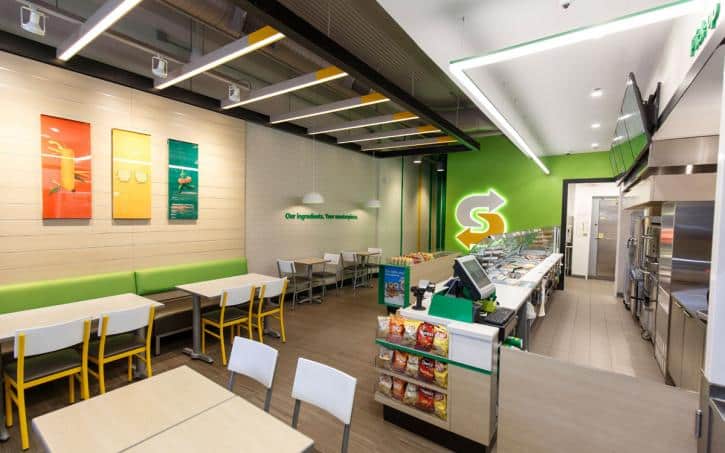
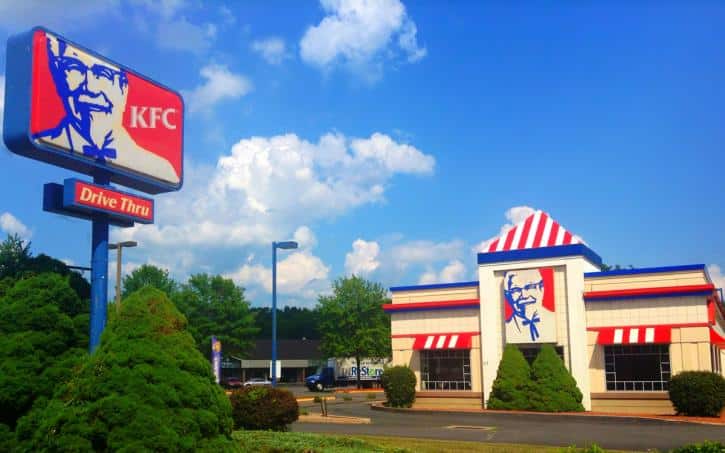
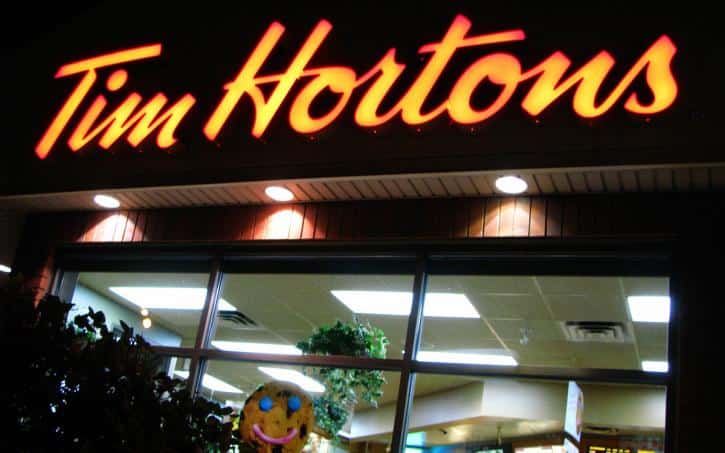

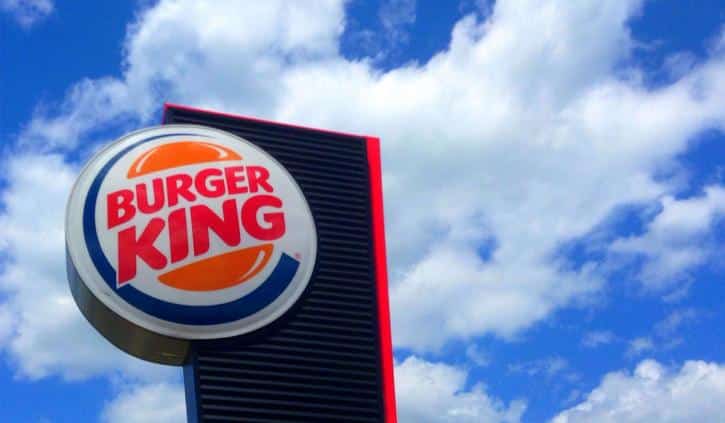
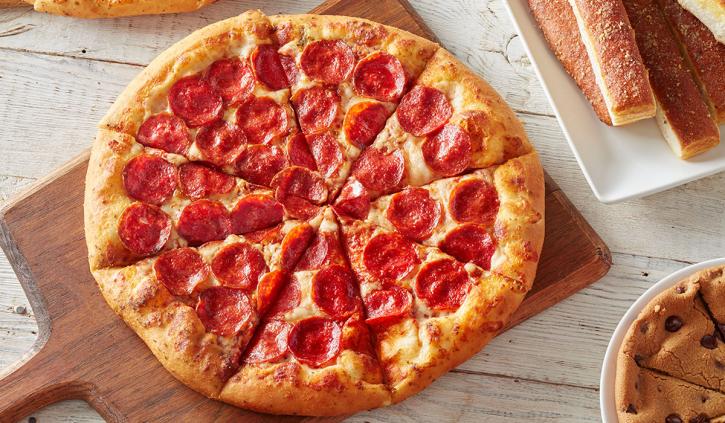
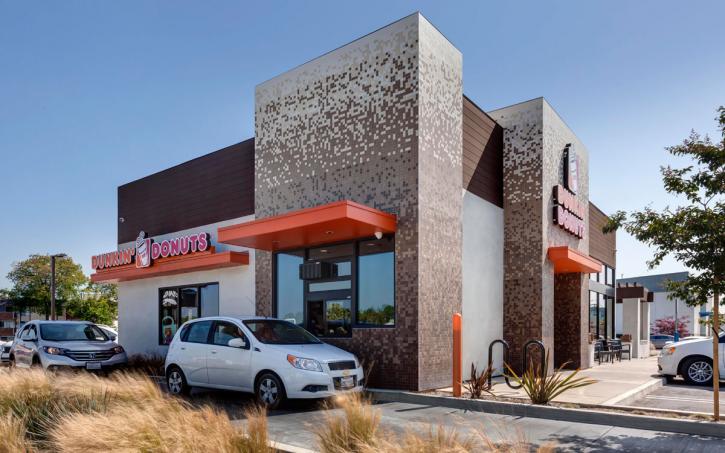

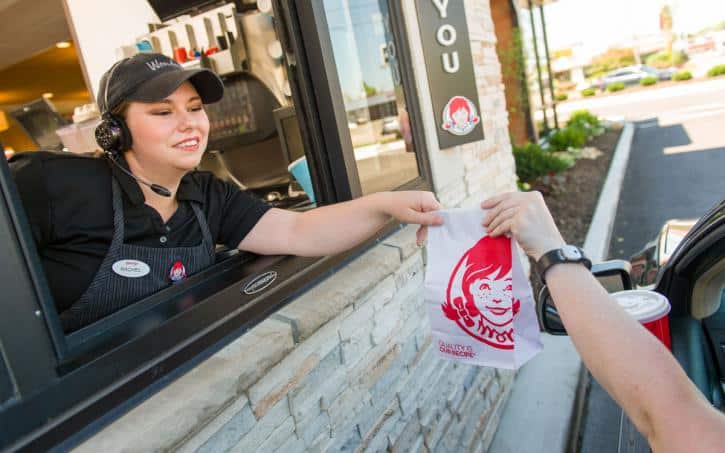
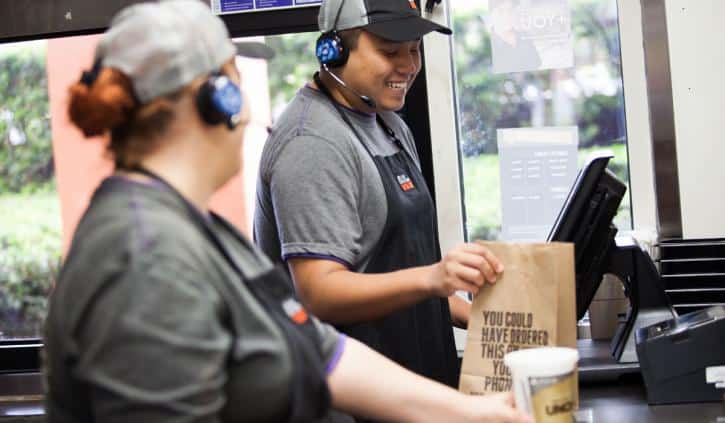
Value Proposition
Each year, valuation and strategy consultancy Brand Finance compiles a ranking of the world’s most valuable restaurant brands. Brand value, in this ranking, equals a net economic benefit a restaurant owner would achieve by licensing the brand in the open market. Brand strength is used to determine what proportion of a business’ revenue is contributed by the brand.
Brand value is broken down by enterprise value, branded business value, brand contribution, and overall brand value. Each brand is assigned a Brand Strength Index score out of 100, which feeds into the brand value calculation. This is made up of marketing investment, stakeholder equity, and business performance. It’s also worth noting that the global part of the conversation plays a large role (to explain why some leaders, like Chick-fil-A) are probably not on Brand Finance’s list.
For more on the terms and methodology check out the full report.
This year’s rankings brought some interesting notes to surface. For one, health-driven diners are flexing their influence over the industry, no question, but are they moving the sales needle? If you take a look at the top brands, it’s hard to determine. Panera slots in at No. 13, for example. However, it’s worth recognizing how quick-service restaurants around the country are improving offerings, and how it’s resonating with guests. These chains, once known for indulgent and unhealthy food (to say it lightly) are adjusting and doing more than just keeping pace—they’re thriving.
“The results of the big restaurant brands are a reminder of the old adage that every happy family is alike, but every unhappy family is unhappy in its own way. The brands that have grown in value are those that are successfully responding to, and leading, customer demands. On the other hand, each of the big brands that suffered have unique causes,” Bryn Anderson, director at Brand Finance, said in a statement.
Here are the most valuable brands in the world. Slide through the arrows in the picture above to begin.
1. Starbucks
Brand value (in millions): $32,421
Last year’s rank: 1
Value last year: $25,615
Percentage change from last year: +27 percent
Starbucks was given top marks thanks to a Brand Strength Index of 89.2 percent, up 3 percent from 2017. Starbucks U.S. same-store sales increased just 2 percent in the first quarter, but it’s global potential and growth is robust. China boosted revenues 30 percent in Q1, thanks in large part to the $1.3 billion record-setting acquisition of the remaining 50 percent share of its East China business. Comps were up 6 percent in China and there’s no reason to expect that growth to taper off. CEO Kevin Johnson said in the Q1 conference call that China’s GDP is expected by many economists to exceed $15 trillion by 2021. In addition to this, Starbucks is preparing to open 1,000 or so global retail Reserve stores and reignite its U.S. business through several tech-driven initiatives, as well as gain share of at-home coffee. Read more about the changes here.
2. McDonald’s
Brand value (in millions): $24,872
Last year’s rank: 2
Value last year: $20,291
Percentage change from last year: +23 percent
McDonald’s topped the strongest brands index list at 89.9 to buoy its overall mark. It’s growth over last year’s rankings shows how the fast-food company’s adjustments this past year have paid off. Despite reports that its new $1 $2 $3 Value Menu was slow out the gate, McDonald’s still enjoyed a watershed calendar year. When McDonald’s reported its fourth quarter and fiscal 2017 earnings in late January, shares were trading around $177—up an eye-opening 44.5 percent over the past year. The company’s global comparable sales climbed 5.3 percent, giving the chain its best sales performance in six years. Systemwide sales were up 7 percent and McDonald’s reported positive guest counts in all segments. McDonald’s also said after the fourth quarter that it plans to invest about $2.4 billion of capital in 2018, the majority of which will go to deploying the “Experience of the Future” design at U.S. locations, and open about 1,000 new locations. So don’t expect this momentum to slide anytime soon.
3. Subway
Brand value (in millions): $8,083
Last year’s rank: 3
Value last year: $8,400
Percentage change from last year: -4 percent
The study pointed to Subway’s reduced revenue forecasts related to store closures as a reason for its decline, although it held firm at the No. 3 spot. There are a lot of changes underway at the 44,000-unit-plus brand right now, which serves about 7.5 million customers per day. Subway’s domestic store count dropped by some 900 stores in 2017. That’s still less than 4 percent of its nearly 26,000-unit U.S. presence. CEO Suzanne Greco said she expects closures to continue somewhat over the next three years as Subway shutters poor-performing stores and relocates others to more desirable locations. This as traffic patterns continue to shift. At the same time, Subway is rolling out its Fresh Forward design complete with vivid color palette, updated beverage stations, new ordering kiosks, and digital menu boards. Subway might absorb growing pains during this process, but it’s clear the chain is making significant moves to remedy its largest concerns.
4. KFC
Brand value (in millions): $8,049
Last year’s rank: 4
Value last year: $6,155
Percentage change from last year: +31 percent
As you can see by that healthy improvement, KFC’s comeback story is in full effect. Read more about the changes here. KFC has been a global power in recent quarters. Global same-store sales lifted 3 percent at KFC in Q4. Internationally, the chain showed robust 5 percent growth in international emerging markets and 3 percent in developed markets. KFC opened 539 new international restaurants in the quarter and 1,247 in 84 countries for the year, including 1,042 in emerging markets. The YUM! Brands chicken giant did report disappointing 1 percent same-store declines in the U.S. in Q4 and 1 percent growth for the year, marking four straight years of positive same-store sales. But KFC has several initiatives set to invigorate its stateside business. Included: the massive GrubHub partnership expected to bring delivery to thousands of restaurants. KFC also plans to remodel another 600 stores in 2018, resulting in nearly 40 percent of the base being updated by year’s end.
5. Tim Hortons
Brand value (in millions): $5,033
Last year’s rank: 5
Value last year: $4,108
Percentage change from last year: +23 percent
Restaurant Brands International’s chain came in as the fifth best brand in Brand Score Index at 83. Tim Hortons has no shortage of brand equity in Canada. U.S. growth has turned out to be a challenge for the Burger King and Popeyes parent, however. Tim Hortons posted comparable same-store sales growth of 0.1 percent in Q4 and 0.1 percent declines in fiscal 2017. The chain has sped up its international growth. Tim Hortons opened its first restaurants in Asia, Europe, and Latin America, in fiscal 2017. The chain achieved 3 percent systemwide sales growth for the year, primarily driven by net restaurant growth. In the U.K., and the Philippines, RBI opened 13 and 10 restaurants in 2017 respectively, and also opened its first two restaurants in Egypt, Spain, and Mexico. “These international stores continue to perform well and our partners have been building robust pipelines for additional openings in 2018 and beyond. We continue to work closely with these partners to accelerate development in these international markets over time,” chief technology and development officer Josh Kobza said in a conference call.
6. Domino’s
Brand value (in millions): $4,846
Last year’s rank: 6
Value last year: $3,983
Percentage change from last year: +22 percent
Another strong year widened Domino’s gap as the most valuable pizza chain in the world. The brand posted same-store sales growth of 3.8 percent and 4.2 percent at company-owned and franchised stores, respectively, in Q4. These numbers actually underwhelmed Wall Street, which shows you the kind of calendar year Domino’s had. For fiscal 2017, Domino’s domestic comps increased 7.7 percent, making it 27 consecutive quarters of positive domestic same-store sales growth. Despite the fact Q4 was the chain’s lowest quarterly growth rate in four years, Domino’s has built momentum on top of momentum in recent reports, especially overseas. Comps growth of 2.6 percent gave Domino’s 96 consecutive quarters of positive international sales gains. The company attributed its numbers to both a more volatile international market and sales dilution across an expanding system. Domino’s only closed 13 stores domestically and 62 abroad, collectively the lowest level in two decades. The fourth quarter ended with a net addition of 422 stores. One note of uncertainty: the company will forge ahead without president and CEO J. Patrick Doyle, who was instrumental in the brand’s turnaround since taking over in 2010, When he assumed the role from David. A. Brandon, who stepped down March 7, 2010, Domino’s shares were trading for $11.90 on the stock market. They were sitting at $227.47 midday Monday. Domino’s board of directors announced that Richard Allison, 50, the president of Domino’s International, would succeed Doyle as CEO.
7. Burger King
Brand value (in millions): $3,150
Last year’s rank: 9
Value last year: $2,568
Percentage change from last year: +23 percent
RBI’s Burger King brand is another fast-food icon enjoying a strong surge of late. The chain reported impressive comparable same-store sales growth of 4.6 percent in the fourth quarter. Perhaps even more notable: Burger King’s comparable sales stateside were up 5.1 percent in the fourth quarter compared to just 1.8 percent in 2016. Right now, Burger King is thriving in the value wars thanks to a balanced approach. Schwartz said the brand’s Bacon King and Crispy Chicken Sandwich lit up sales in 2017. Success could be seen across the board. Systemwide sales growth was 12.3 percent in the three months ended December 31. Burger King posted 6.5 percent net restaurant growth compared to 4.9 percent in the year-ago period. There were 7,226 Burger King in the U.S. as of December 31 after the company added a net of 70 new restaurants. Internationally, Burger King was strong as well. The chain ended 2017 with more than 875 restaurants in China, up from about 650 at the end of 2016. Burger King opened its 500th restaurant in Russia this past year and closed 2017 with more than 520 units—growth of about 100 restaurants. France grew its footprint over 200 locations. Brazil ended 2017 with nearly 700 locations compared to about 600 the prior year.
8. Pizza Hut
Brand value (in millions): $3,101
Last year’s rank: 7
Value last year: $3,295
Percentage change from last year: -6 percent
Pizza Hut took its lumps early in the year as it began to transform. But results began to shine through in the later part of the fiscal calendar. In Q4, global same-store sales lifted 1 percent and were flat for the year. Its U.S. comps hiked 2 percent in the fourth quarter. Pizza Hut had posted five consecutive quarters of declining sales before turning positive in the third quarter. Back-to-back growth quarters is a direct reflection of YUM!’s $130 million plan to reinvigorate Pizza Hut announced last spring after the company’s same-store sales dropped 7 percent in the U.S. in Q1. Some improvements: the chain rolled out 145,000 new pouches made with 3M Thinsulate Insulation thermal technology designed to deliver pizza 15 degrees hotter. Pizza Hut also hired 14,000 delivery drivers in 2017 and there are now more than 24,000 new car toppers on the road. The Hut Rewards program was launched in August. Growth wise, Pizza Hut opened 340 new international restaurants in Q4 and 826 units in 77 countries, including 592 restaurants in emerging markets. It wouldn’t be surprising to see Pizza Hut climb back up the charts next year.
9. Dunkin’ Donuts
Brand value (in millions): $2,677
Last year’s rank: 10
Value last year: $2,401
Percentage change from last year: +11 percent
Dunkin’ has a pretty bold three-year plan: 18,000 total U.S. units, including about 1,000 new stores in the next two—more than 90 percent of which will be built outside of its Northeast base. When you consider how much Dunkin’ is growing right now, and how it plans to enter markets where it doesn’t have a strong presence, you can understand some of the other changes. Like Dunkin’s decision to drop the “Donuts” off the branding in certain new locations. Dunkin’ sees this opportunity as a chance to win in categories it’s historically not given credit for—places beyond convenience and breakfast. Dunkin’ wants to chase afternoon guests with Dunkin’ Deals (a medium hot or iced latte for $2 from 2 to 6 p.m. is one such offer). It also expects to play a larger role in the craft coffee culture with Cold Brew, additional espresso products, and an extension of its premium tea and frozen beverage lines. Also expect more sandwiches. On the previous note, however, Dunkin’ isn’t abandoning its breakfast and convenience strengths. In fact, the company is opening new next-gen stores with double drive thrus, where the second lane is for mobile orders. Its breakfast business has never been better, either. Currently, Dunkin’s morning business accounts for about 60 percent of systemwide sales. That segment has reported positive for Dunkin year-over-year and increased sequentially each quarter in 2017. Read more about the brand’s plan here. In the fourth quarter, Dunkin’ posted same-store sales growth of 0.8 percent.
10. Chipotle
Brand value (in millions): $2,541
Last year’s rank: 8
Value last year: $2,935
Percentage change from last year: -13 percent
Chipotle’s post food-safety issues have been well documented. The burrito chain’s comeback fluctuated but mostly dipped in the wrong direction last year. This after a promising first quarter that saw same-store sales boom 17.8 percent, year-over-year, and revenue jump 28.1 percent to $1.07 billion. This prompted Steve Ells to say Chipotle had made “incredible progress.” But then the same tricks reared up. A Sterling, Virginia, location suffered a norovirus incident that affected more than 130 customers. A video of rodents falling from a ceiling went viral. An LA store was investigated for food safety. Even a TV actor took aim at the brand on Instagram. Legitimate or not, these public relations hits showed the sensitivity in Chipotle’s armor. In early March, Chipotle’s new CEO Brian Niccol, took the helm, with Ells moving to a chairman position. The former head of Taco Bell seems like a perfect fit given his resume as a marketing maven. Can he right the ship? Are new campaigns or value menu items coming? We will see soon enough. Read more about what to expect here.
Wendy’s on the rise
Brand Finance stretched the list out to 25 but didn’t provide figures past the top 10. Here are some points to note:
Wendy’s was far and away the biggest climber this year. The chain’s brand value increased a whopping 61 percent over last year, vaunting Wendy’s to No. 12 from No. 15. Brand Finance credited this to Wendy’s bold growth goals, which included opening more than 100 sites in the first three quarters of 2017. Same-store sales grew 1.3 percent in the fourth quarter as Wendy’s achieved 20 consecutive quarters of positive gains. The brand’s average-unit volumes in North America hit company records in 2017 at $1.61 million. For the first time in Wendy’s history, global systemwide sales growth, at 3.5 percent, outpaced same-store sales (2 percent in the U.S.), driven by new restaurant development, which boosted AUVs in turn. Global systemwide sales eclipsed the $10 billion mark at $10.3 billion. Wendy’s expects to have 7,250 global units (6,400 in North America) and $12 billion in systemwide sales by 2020.
Some final numbers
Here were the chains with the best brand value change from last year:
Wendy’s: 61 percent
Olive Garden: 45 percent
KFC: 31 percent
Starbucks: 24 percent
Sonic: 24 percent
Burger King: 23 percent
McDonald’s: 23 percent
Tim Hortons: 23 percent
Domino’s: 22 percent
Papa John’s: 17 percent
And here’s the other side:
Subway: -4 percent
Chili’s: -5 percent
Jack in the Box: -6 percent
Pizza Hut: -6 percent
Denny’s: -7 percent
Cracker Barrel: -12 percent
Chipotle: -13 percent
Cheesecake Factory: -24 percent
Taco Bell: -27 percent
Buffalo Wild Wings: -29 percent
And as for the rest of the Top 25 overall, here’s how it turned out:
11. Costa Coffee
12. Wendy’s
13. Panera Bread
14. Taco Bell
15. Jollibee
16. Olive Garden
17. Papa John’s
18. Chili’s
19. Sonic
20. Jack in the Box
21. Buffalo Wild Wings
22. Texas Roadhouse
23. Cracker Barrel
24. Denny’s
25. Cheesecake Factory










